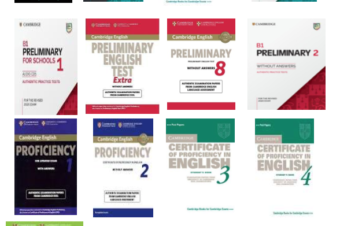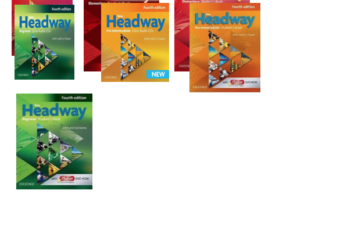Come up with your own addition to the English language. Suggest a new word by Feb. 28, and it could become our April Fools’ Word of the Day.
The Twitter account @nyt_first_said posted these words when they first appeared in The New York Times. Learn more in this related lesson plan.
By The Learning Network
Jan. 31, 2022
“Of all the factors that transform how we communicate, none are so powerful as young people, who have always steered language,” writes book critic Parul Sehgal.
Our February Vocabulary Challenge invites middle and high school students to suggest a new word of their own. In the comments, tell us what your word means and why you think it’s an important addition to an evolving language. We plan to publish the winner as our Word of the Day on April 1, otherwise known as April Fool’s Day.
Need inspiration? Check out our lesson plan about a Twitter account that tracks new words as they appear in The New York Times, and a collection of Times articles about the expansion of language that you can find at the bottom of this post.
Find more opportunities to practice vocabulary in our calendar of Vocabulary Challenges, and share any questions or feedback with us at LNFeedback@nytimes.com.
The Challenge
We are looking for a creative, memorable new word that fills a clear gap in the English language. Since the winning word will be published as a Word of the Day, we hope to select a word that we can imagine ourselves, and others, using.
You may create a new word by combining parts of existing words, as in the portmanteaus “doomscrolling,” “friendors” and “quitagion,” which have all appeared in The New York Times. Or, you may devise something entirely new to describe a situation, category or feeling we do not have a word for yet. (“Cheugy” is a recent example.)
The Rules
Submit your new word in a comment on this post by Feb. 28, 2022. Your comment should contain the following:
- Your new word, which should not already be in circulation, even locally, and must have never appeared in The Times. Check by entering your word, in quotation marks, into the search bar on NYTimes.com.
- Its definition
- An example sentence that you can imagine reading in The Times.
- A brief explanation of why this word would be a valuable addition to the English language.
Eligibility
- Submit your entry as a comment on this post by 11:59 p.m. Pacific time on Feb. 28.
- You may work alone, in pairs, in small groups or as a whole class, but we allow only one entry per student. If you work as a group or whole class, indicate that by submitting under a group name (“Ms. B’s 3rd period”; “The Word Wizards,” etc.) rather than listing every student. If you win, we will contact you for individual names.)
- Minimum Age Requirements: Middle and high school students ages 13 and older in the United States and Britain, and 16 and older elsewhere, can submit by commenting on this post. Teachers and parents can submit on behalf of students in middle or high school who do not meet these age requirements. If you are submitting on behalf of a student, please include the student’s name at the bottom of the comment.
- Remember, you cannot edit your entry once it has been submitted.
Additional Resources
How does language grow and change over time? Explore more with these New York Times articles and Learning Network teaching resources on the expansion of language.
Editors’ Picks
Up Next for Rafael Nadal? His Specialty, the French Open.
Rihanna and the Art of the Pregnancy Portrait Shoot
Eddie Vedder Is Still Learning to Live With Loss
Continue reading the main story
The Importance of Education in Times of Crisis
“Hep,” “off the cob” and “shove in your clutch”: Teen slang, 1943 http://timesmachine.nytimes.com/timesmachine/1943/12/05/83955970.html…
Share
When The Times First Says It, This Twitter Bot Tracks It and related lesson plan
BIPOC or POC? Equity or Equality? The Debate Over Language on the Left. and related Student Opinion question
When You ‘Literally Can’t Even’ Understand Your Teenager
What Is ‘Cheugy’? You Know It When You See It.
The New Words for Our New Misery
Our Ever-Expanding Virus Vernacular
There’s a Name for the Blah You’re Feeling: It’s Called Languishing
Gender Pronouns Are Changing. It’s Exhilarating.
Learn Vocabulary With The New York Times
Lesson of the Day: ‘When The Times First Says It, This Twitter Bot Tracks It’
Learn Vocabulary All Year With The New York Times
14 Ways to Learn Vocabulary and Explore Language With The New York Times
The Word of the Day is provided by Vocabulary.com. Learn more and see usage examples across a range of subjects in the Vocabulary.com Dictionary. See every Word of the Day in this column.
WRITE A COMMENT
You’re almost out of free articles.
Get unlimited article access
for €0.50 a week.
Subscribe now
Limited time offer. Cancel anytime.
Suggested newsletters for you
Don’t show me this again
DAILY
The Morning
Make sense of the day’s news and ideas. David Leonhardt and Times journalists guide you through what’s happening — and why it matters.
Sign Up
AS NEEDED
Breaking News
Alerts when important news breaks around the world.
Sign Up
WEEKLY
The Learning Network
Teaching and learning materials based on New York Times content.
Sign Up
The Winners of Our 3rd Annual Personal Narrative Essay Contest for Students
Jan. 25
Putting Personality on Paper: Our New Profile Contest
Jan. 26
Vocabulary Challenge for English Learners: Write a Story Using Our Words of the Day
Dec. 30, 2021
3h ago
Jan. 26
Continue reading the main story
With a New Creative Director, Alaïa Welcomes a New Era
How Much Have You Learned About Black History?
Jan. 31
DANIEL BEREHULAK FOR THE NEW YORK TIMES
How Much Do You Know About Haiti?
Jan. 31
Film Club: ‘Think About the Beautiful Future Ahead’
Jan. 27
Editors’ Picks
Jan. 20
Searching for America, South of the Mason-Dixon
Jan. 25
John Daw/Australian Wildlife Journeys
Orcas Are Able to Kill and Eat Blue Whales, Scientists Confirm
Jan. 29
Most Popu








Leave a Reply